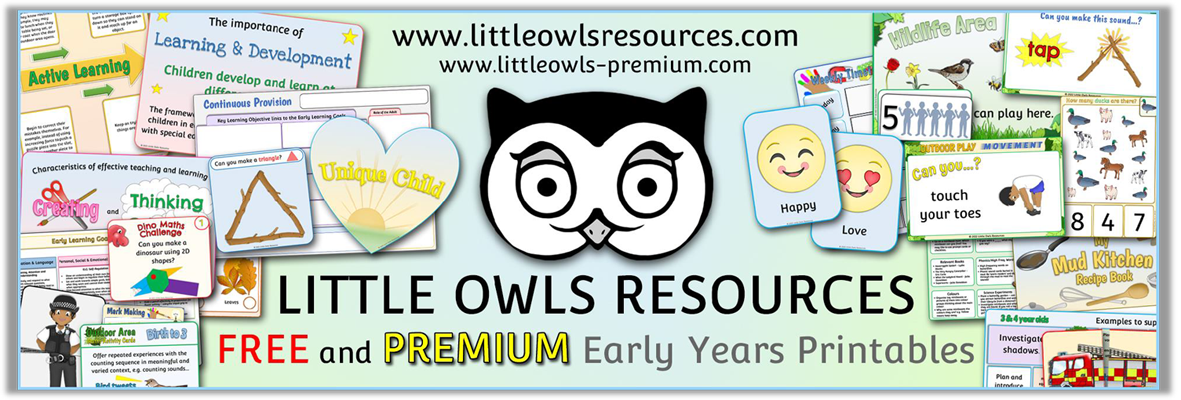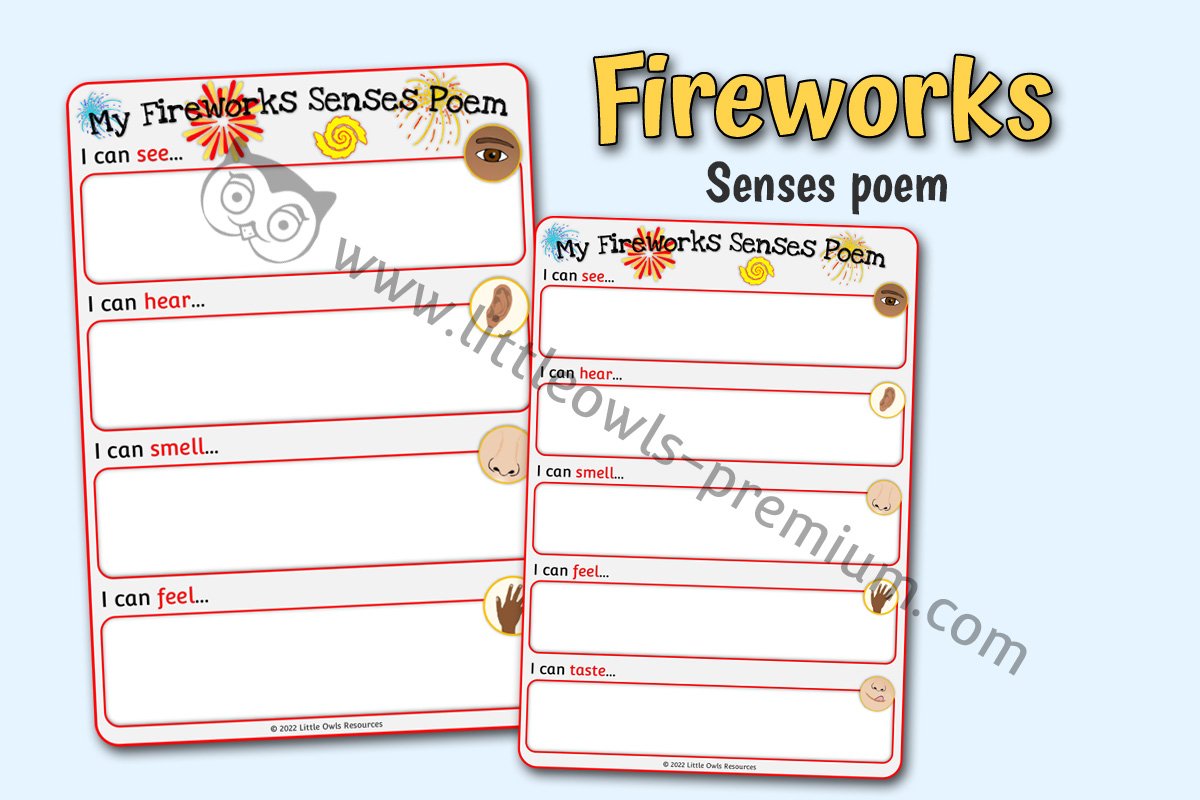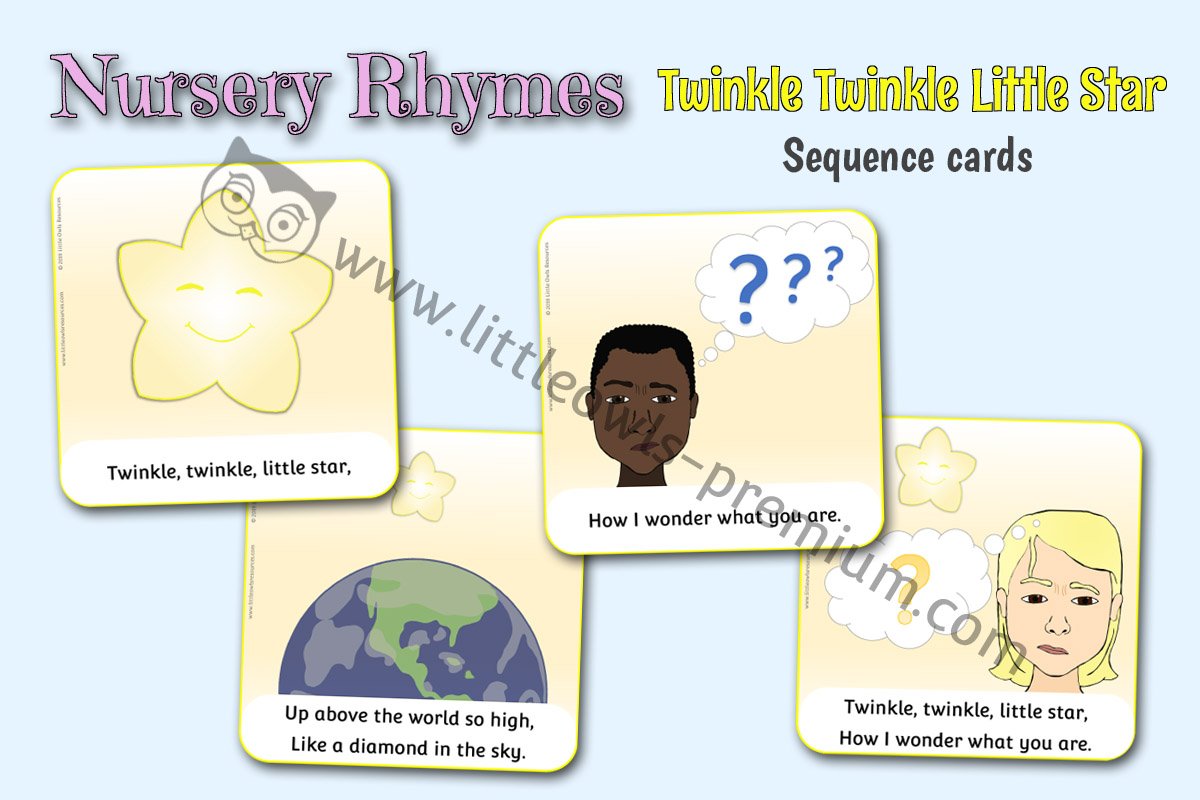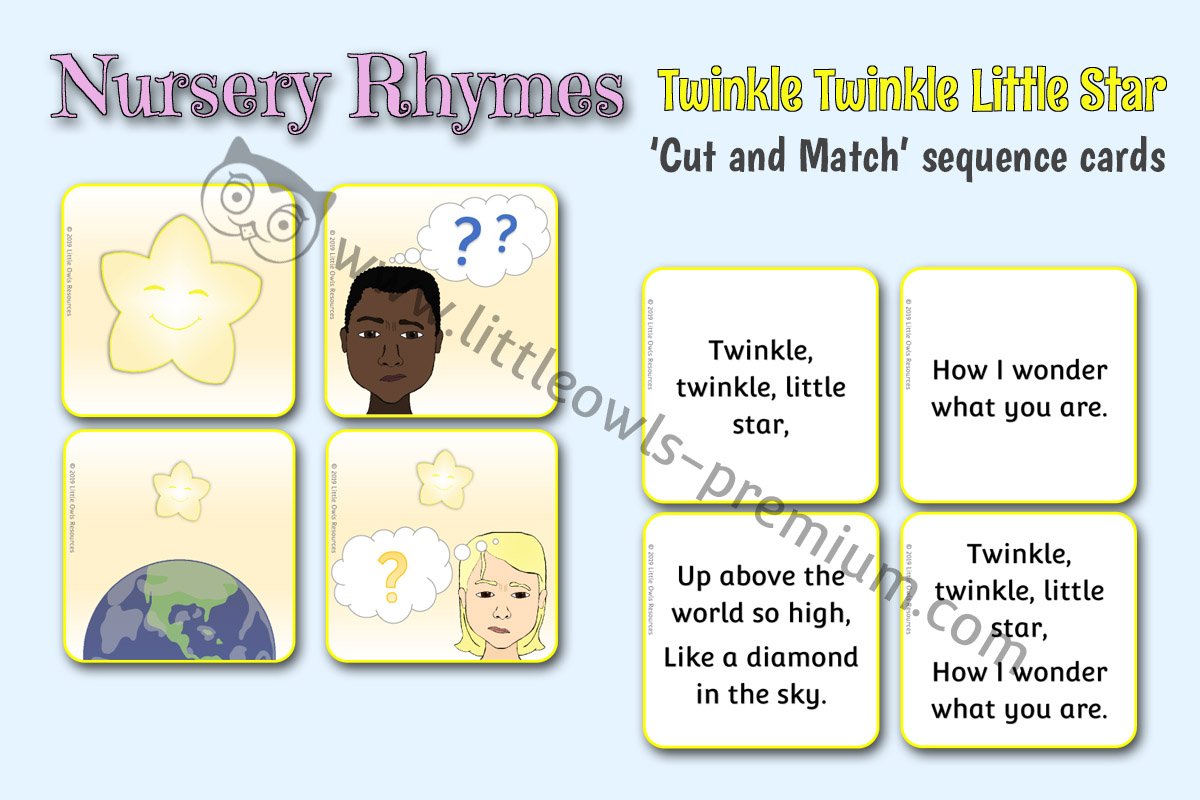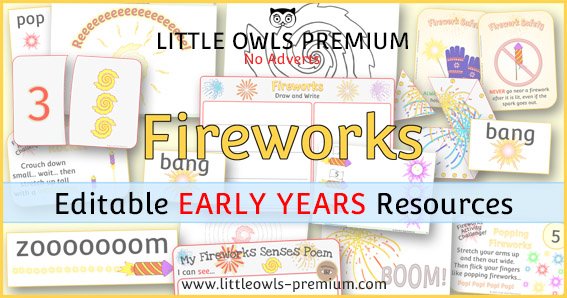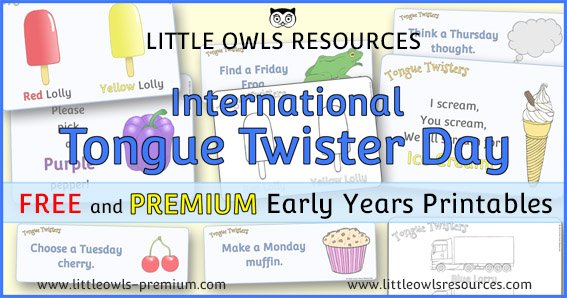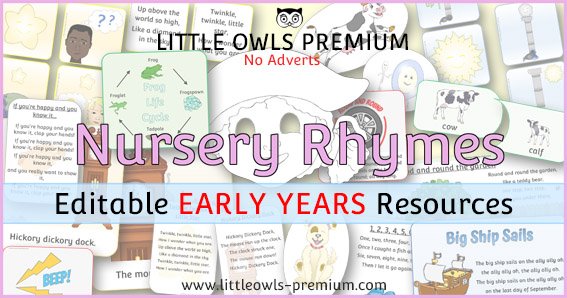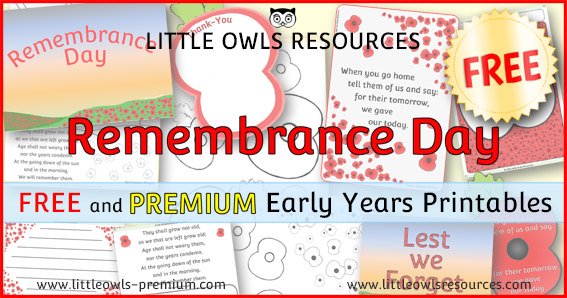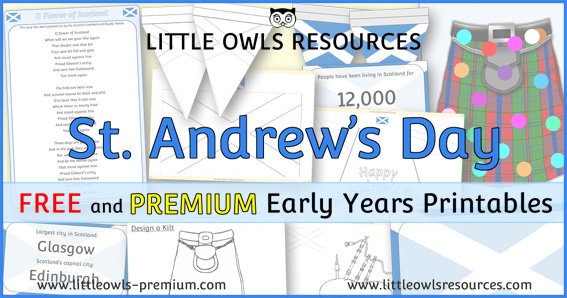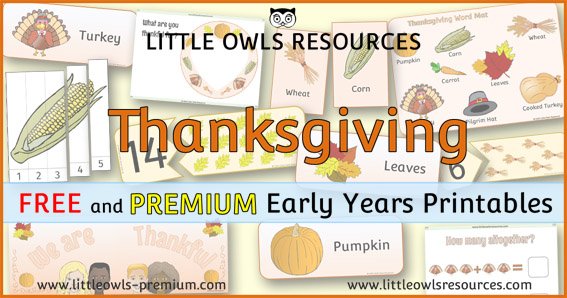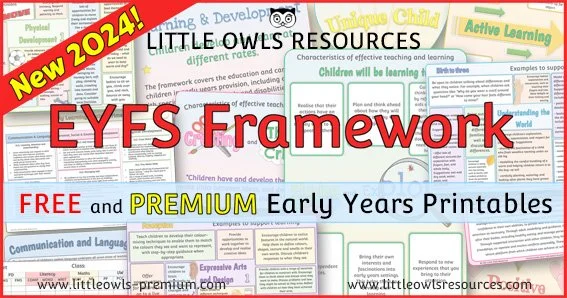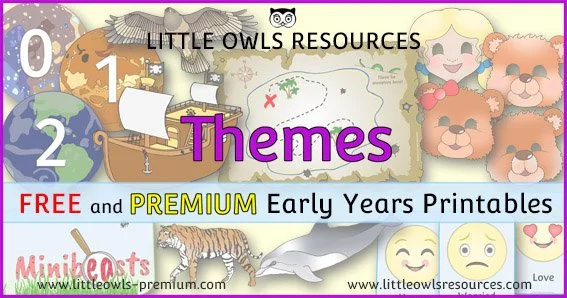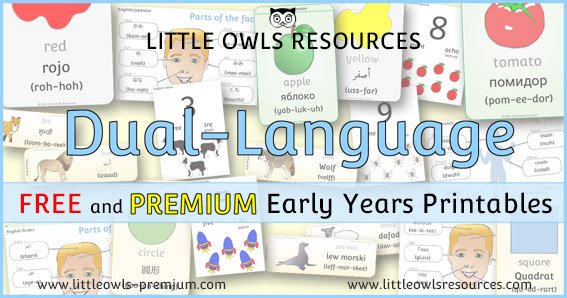Fireworks - EYFS/Early Years activities, Displays and ideas
SECTIONS ON THIS PAGE:
Free Sample Resources
‘Fireworks’ topic resources (scroll down to browse or search by resource title or keywords)
Firefighter resources
Relevant Nursery Rhyme Resources
What is Fireworks/Bonfire/Guy Fawkes Night?
More November topics/special dates you may be interested in
If you are not a member already, become a ‘Free Access’ member here. This will give you access to resources within the ‘Free Sample Resources’ sections at the top of most pages and ‘Special Dates Calendars’. Some whole topics are even free! Find out more about all of our membership options here. If you are already a member… thank-you! x
FREE SAMPLE RESOURCES!
(Click on the images below to find out more)
Please note that both Editable (docx file) and non-editable (pdf file) versions are available for all Fireworks topic resources. (Editable files require Microsoft Word to work at optimum level and Non-Editable files require a pdf viewer.)
Area of Learning/Resource Title
- Area - Communication and Language
- Area - Expressive Arts and Design
- Area - Literacy
- Area - Mathematics
- Area - Personal Social and Emotional
- Area - Physical Development
- Area - Understanding the World
- CVC WORD BUILDER GAME
- FIREWORK ALPHABET
- FIREWORK COLOUR CHECKLISTS
- FIREWORK COLOUR MATCH GAME
- FIREWORK COLOUR SORTING
- FIREWORK EXPLOSION 2-PIECE PUZZLES
- FIREWORK NUMBER SLICE PUZZLES
- FIREWORK NUMBER SLICE PUZZLES - COLOURING
- FIREWORK NUMBERS 0-20
- FIREWORK PLAYDOUGH MATS
- FIREWORK RHYTHMS
- FIREWORK SAFETY CARDS
- FIREWORK SAFETY CARDS - COL
- FIREWORK SAFETY POSTER
- FIREWORK SAFETY POSTER - COL
- FIREWORK SIZE ORDERING CARDS
- FIREWORK SOUNDS
- FIREWORK SOUNDS - COL
- FIREWORKS - Counting Puzzles (1-10)
- FIREWORKS - Dice Game
- FIREWORKS - Draw and Write
- FIREWORKS ACTIVITY CHALLENGE
- FIREWORKS COLOURING PACK
- FIREWORKS PENCIL CONTROL
- LARGE FIREWORK OUTLINES
- MY FIREWORKS SENSES BOOKLET
- MY FIREWORKS SENSES POEM
- ROCKET COUNTDOWN GAME
- ROCKET/EXPLOSION MATCH SHEETS
Keywords
- 2D Shapes 1
- Activity 26
- Addition 1
- Alphabet 1
- Art and Craft 3
- CVC Words 1
- Cards/Flashcards 6
- Checklists/Tally Charts 1
- Colouring 6
- Colours 8
- Counting 3
- Discussion Prompts 6
- Expressive Movement 1
- Fine Motor 20
- Games 10
- Gross Motor 1
- Group Activity 6
- Letters and Sounds - Phase 1 2
- Letters and Sounds - Phase 2 1
- Mark Making/Drawing/Writing 11
- Matching and Sorting 2
- Measures - Size 1
- Music 1
- Number Lines 3
- Number Ordering 6
- Number Recognition 8
- Observation 10
- One More/+ 1 1
- Onomatopoeia 3
- Patterns 3
- Pencil Control 11
- Personal Opinion/Feelings 3
- Playdough/Loose Parts 1
- Posters/Displays 10
- Problem Solving 10
- Puzzles 5
- Rhythm 1
- Safety 4
- Scissor Skills 2
- Senses 3
- Subitising 2
- Take Home 12
- Turn Taking 4
Click on the thumbnail images below for further details…
‘Fireworks’ topic resources…
Firefighter resources
Relevant Nursery RHyme Resources…
What is Fireworks/Bonfire/Guy Fawkes Night?
Fireworks Night, also known as Bonfire Night or Guy Fawkes Night, is a British celebration held annually on November 5th. The night is marked by fireworks displays, bonfires, and the burning of effigies, often representing Guy Fawkes, the historical figure associated with the infamous Gunpowder Plot of 1605.
Historical Background of Fireworks Night
The origins of Fireworks Night date back to November 5th, 1605, when Guy Fawkes, a member of a group of English Catholics, attempted to blow up the Houses of Parliament in London. The plot, known as the Gunpowder Plot, aimed to assassinate King James I and restore a Catholic monarch to the throne. However, the plan was foiled when Fawkes was discovered guarding 36 barrels of gunpowder beneath Parliament and arrested before he could carry out the explosion.
In response to the failed plot, King James I ordered that November 5th be celebrated as a day of thanksgiving for the plot's failure. People began lighting bonfires to commemorate the king’s survival, a tradition that has continued over centuries.
Traditions and Celebrations of Fireworks Night
Bonfires: Bonfires are lit in towns, cities, and villages across the UK. Originally, they represented the burning of traitors, and effigies of Guy Fawkes are often placed on top of the bonfire, symbolising the punishment he would have faced.
Fireworks Displays: Fireworks have become a central part of Bonfire Night, symbolising the gunpowder that Guy Fawkes and his group intended to use to destroy Parliament. Public fireworks displays are held in parks and open spaces, drawing large crowds.
The "Guy" Effigy: Children traditionally create effigies of Guy Fawkes, often called "guys," out of old clothes stuffed with straw. These effigies are then placed on the bonfire. In the past, children would parade these effigies around, asking for "a penny for the Guy," a custom that has mostly faded but was once widespread.
Traditional Foods: Bonfire Night has its own seasonal foods, often enjoyed at outdoor gatherings around the bonfire. Typical treats include toffee apples, bonfire toffee, baked potatoes, hot soup, and sausages.
Significance of Fireworks Night Today
While Bonfire Night has historical roots, it has largely evolved into a community celebration, focusing less on its political origins and more on enjoying fireworks and gathering together. However, the history of the Gunpowder Plot is still taught in schools, and the story of Guy Fawkes remains a part of British cultural heritage.
Modern Perspectives and Observance
Safety and Regulations: Due to the potential dangers of bonfires and fireworks, many people attend organised events with safety measures in place. The sale and use of fireworks are also regulated in the UK, with rules in place to ensure safety.
Cultural Reflection: Fireworks Night has a unique place in British culture, symbolising a complex period in English history and serving as a reminder of the importance of political stability and tolerance.
Overall, Fireworks Night is a memorable autumn event, combining historical remembrance with fun traditions and community spirit.
More November topics/special dates you may be interested in…
